Submitted by Rashi Jain
Bridging Cultures Through Architecture: The Uniting Power of the BAPS Hindu Temple in Abu Dhabi
India Architecture News - Apr 21, 2024 - 05:44 1628 views
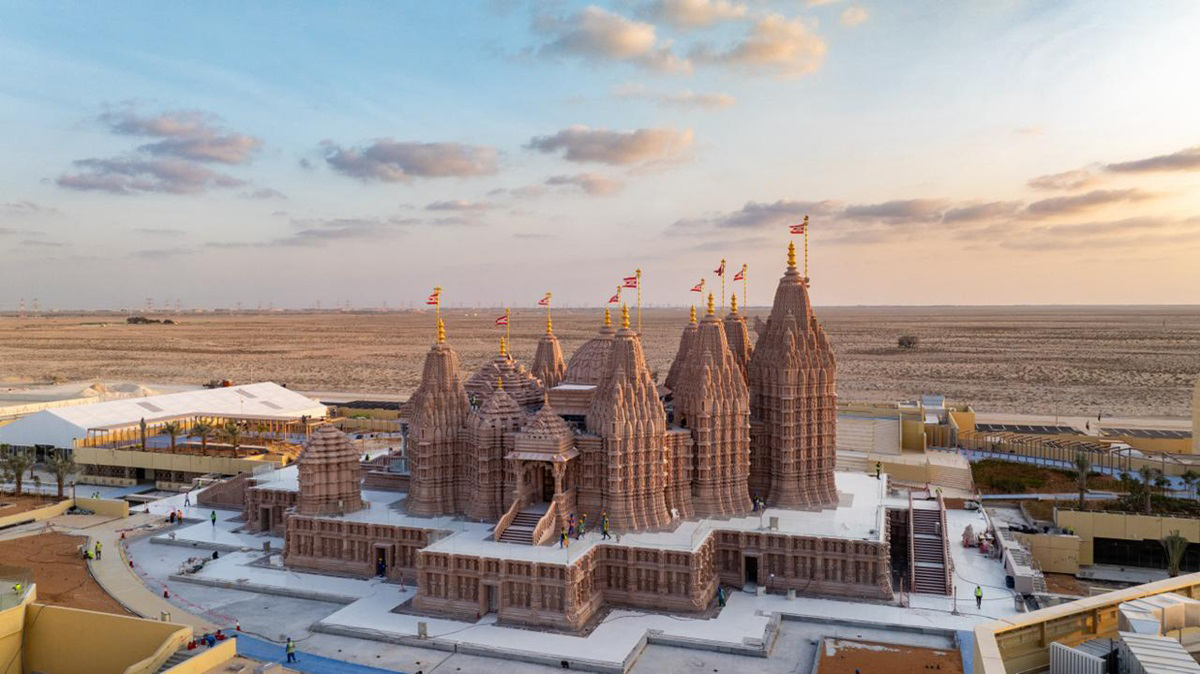
In a historic moment, the inauguration of the BAPS Hindu Mandir in Abu Dhabi on 14th February 2024 by the Honorable Indian Prime Minister Shri Narendra Modi not only marked the completion of the first Hindu stone temple in the Middle East but also symbolized a significant step towards fostering cultural and religious unity along with strengthening bilateral relations between India and the UAE.
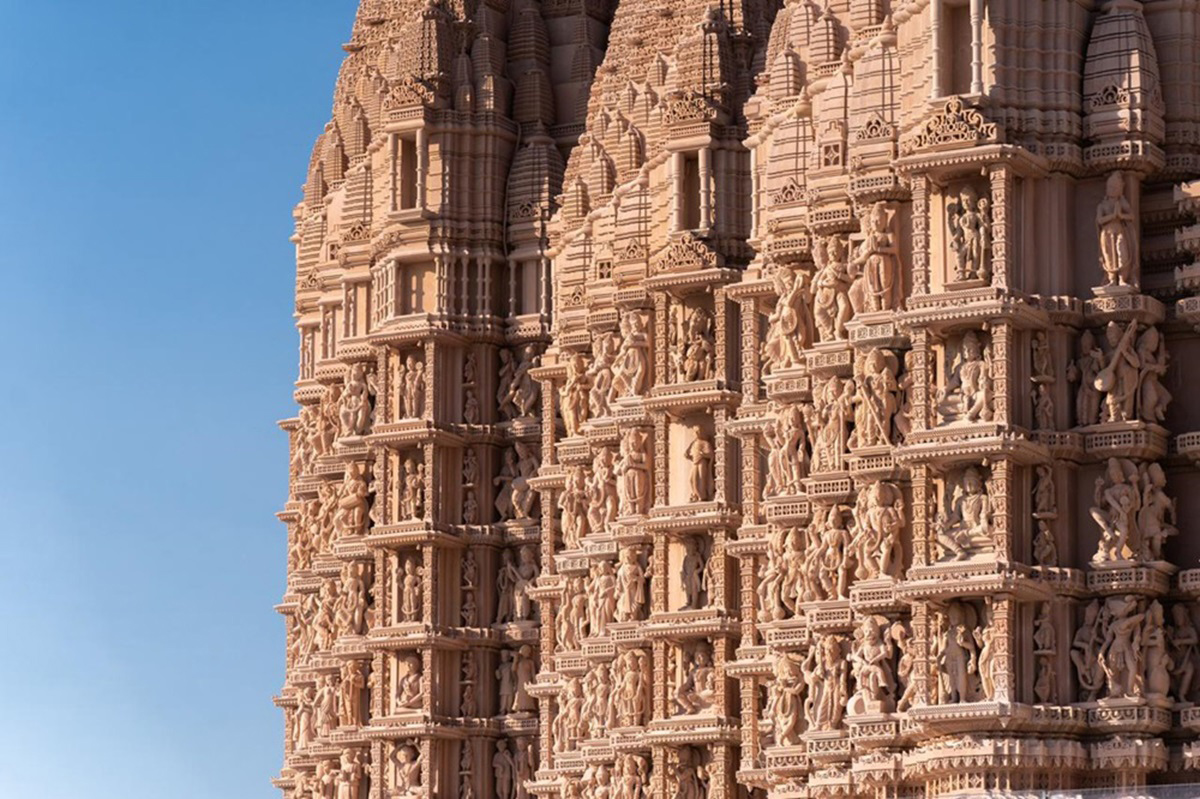
Constructed in the classical Nagar architectural style, the temple's façade beautifully depicts timeless values, stories of cultural unity, revered Hindu spiritual leaders, and divine avatars. Image (c) BAPS Swaminarayan Sanstha
This architectural marvel emerges majestically from the sandy expanse of 27 acres, reaching a towering height of 108 feet on the outskirts of Abu Dhabi, a testament to India's cultural richness and architectural ingenuity. Embracing a lotus-inspired design with seven spires symbolizing the UAE's seven Emirates, the Mandir stands as a beacon of inclusivity, welcoming people of all backgrounds and beliefs. Its creation was made possible through the collaborative efforts of BAPS Swaminarayan Sanstha and Shapoorji Pallonji group, illustrating the transformative potential of architecture transcending barriers and fostering global harmony.
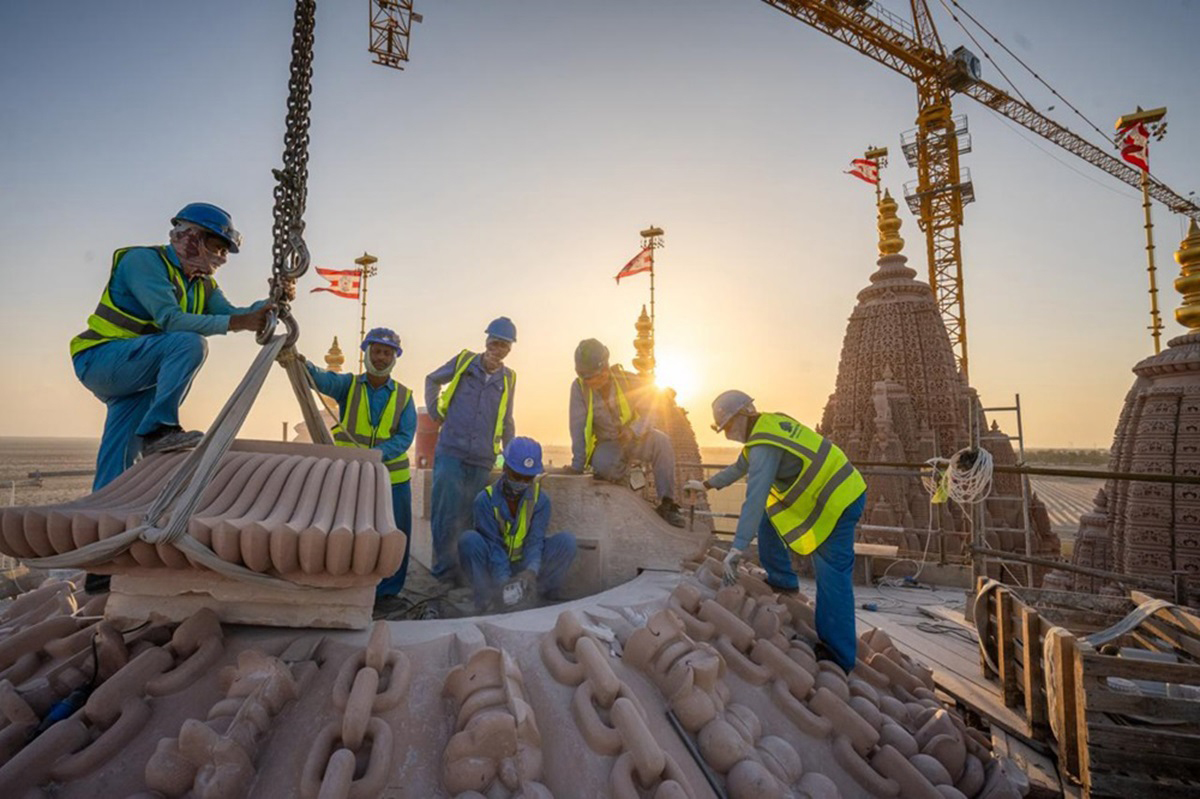 The temple complex spans 13.5 acres, featuring a parking area of equal size capable of accommodating approximately 1,400 cars and 50 buses. Image (c) BAPS Swaminarayan Sanstha
The temple complex spans 13.5 acres, featuring a parking area of equal size capable of accommodating approximately 1,400 cars and 50 buses. Image (c) BAPS Swaminarayan Sanstha
Beyond its architectural grandeur, the main Mandir complex is 262 ft in length and 180 ft in width encompassing seven ancillary buildings catering to over 15,000 visitors daily. Its design includes distinctive water features representing the Ganga, Yamuna, and Saraswati rivers. The main temple is constructed on a raft foundation using UAE’s largest single pour of unreinforced fly ash concrete. Instead of iron and steel reinforcements, bamboo sticks and glass fiber were used.
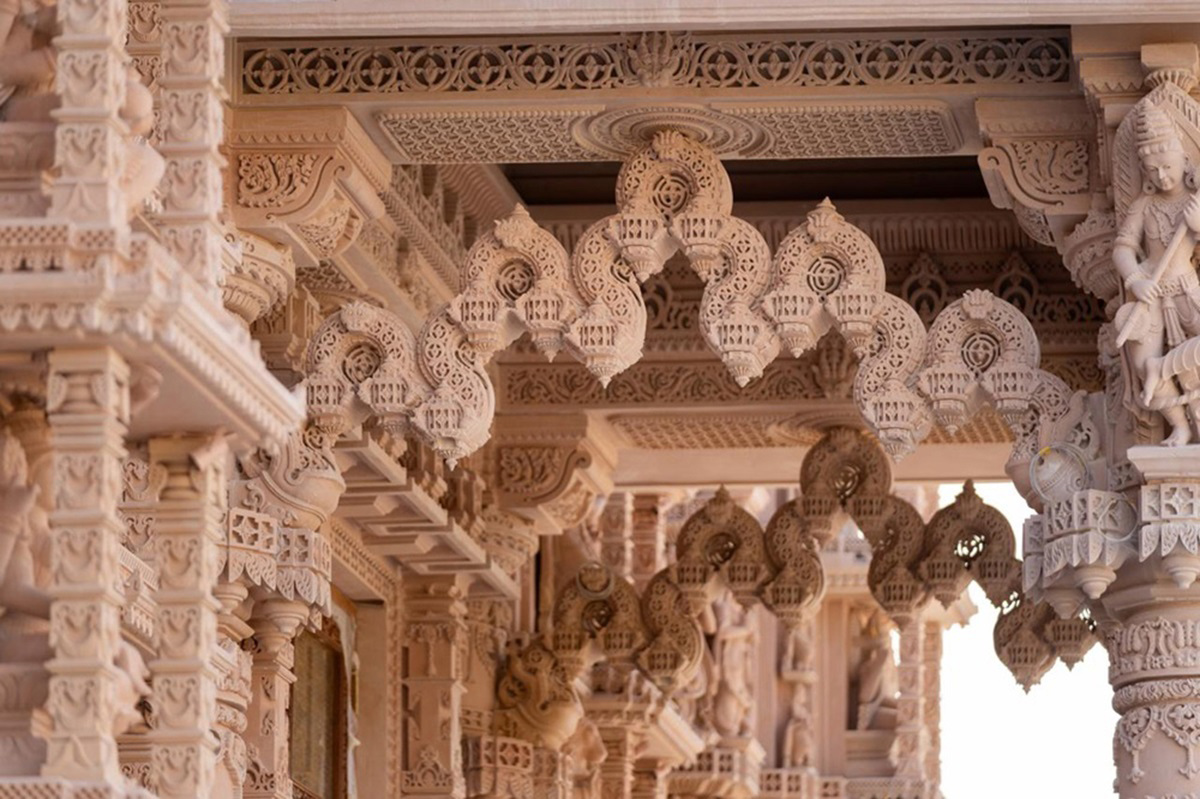 The temple showcases two domes, known as the Dome of Harmony and the Dome of Peace, each adorned with intricate carvings symbolizing human coexistence through representations of earth, water, fire, air, and plants. Image (c) BAPS
The temple showcases two domes, known as the Dome of Harmony and the Dome of Peace, each adorned with intricate carvings symbolizing human coexistence through representations of earth, water, fire, air, and plants. Image (c) BAPS
The temple's facade, constructed using 40,000 cubic meters of marble from Italy and 1,80,000 cubic meters of pink sandstone from Rajasthan (India), showcases the intricate craftsmanship of thousands of artisans and volunteers who meticulously carved the stones in India before assembling them like a giant jigsaw puzzle in Abu Dhabi. This landmark achievement not only celebrates India's cultural heritage but also highlights the transformative power of architecture in bridging divides, fostering understanding, and strengthening diplomatic relationships across borders.

Additionally, the temple includes an assembly hall with a seating capacity of 3,000 people, a community center, exhibition spaces, classrooms, and a majlis venue. Image (c) BAPS
The Shapoorji Pallonji Group, which is 159 years old, has built several landmarks across the world. It has been present in the Middle East for close to 50 years, beginning with the Sultan’s Palace in Muscat, in 1975. Some of its recent marquee projects in India are Bharat Mandapam and Kartavya Path in New Delhi, Port Blair Airport, and Atal Tunnel in Himachal Pradesh.
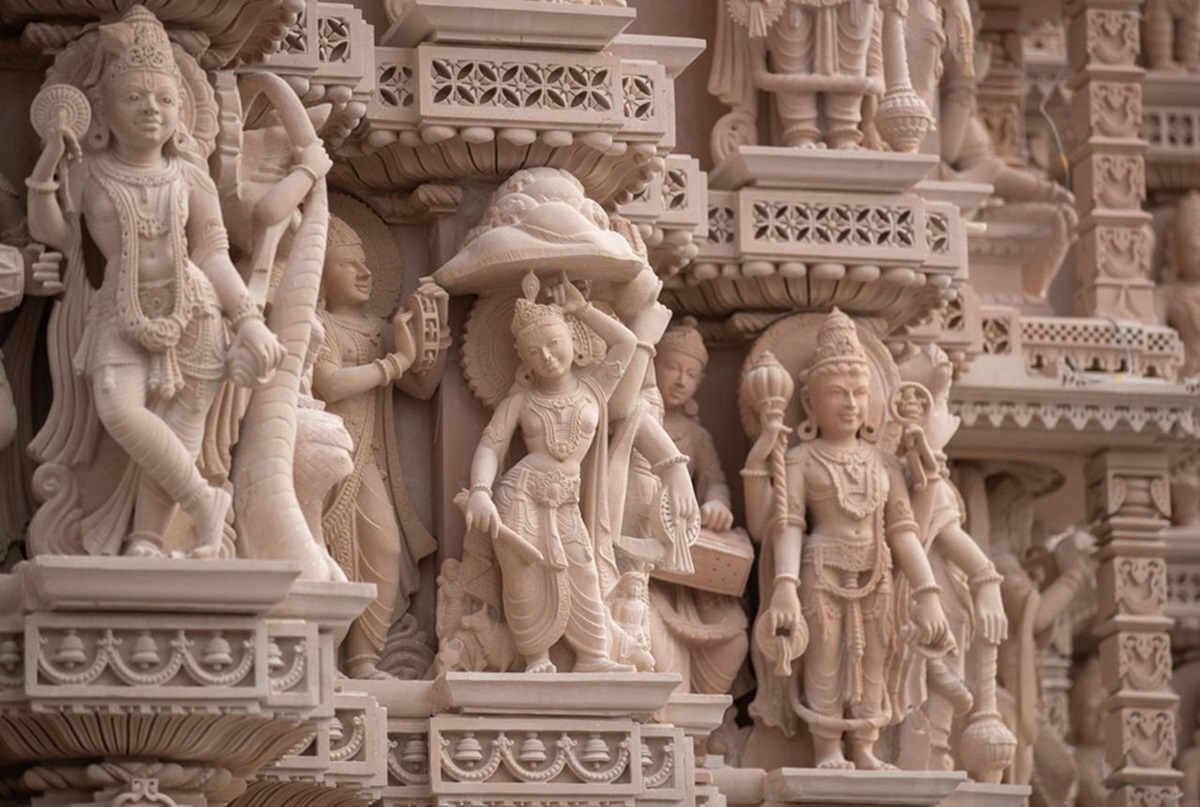
The word 'harmony' is inscribed in 30 different ancient and modern languages within the temple. Image (c) BAPS
As we marvel at the magnificence of the BAPS Hindu Mandir, let us also recognize the profound impact of architecture in shaping our world and fostering unity amidst diversity.
 The Indian diaspora in the UAE comprises nearly 3.3 million individuals, constituting a significant segment of the nation's population. Among them, 150 to 200 families are dedicated followers of BAPS Swaminarayan. Image (c) BAPS
The Indian diaspora in the UAE comprises nearly 3.3 million individuals, constituting a significant segment of the nation's population. Among them, 150 to 200 families are dedicated followers of BAPS Swaminarayan. Image (c) BAPS
Top Image (c) BAPS
> via BAPS Swaminarayan Sanstha